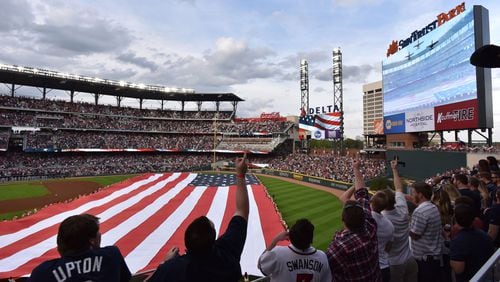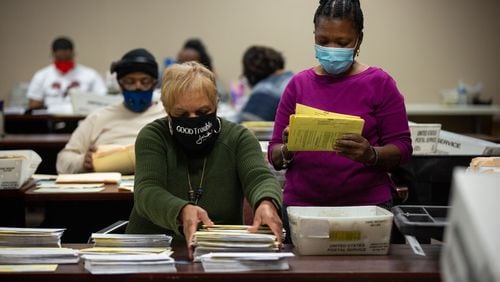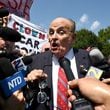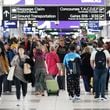Unless they make expensive acquisitions in the next few weeks, the Braves will open the season with their player payroll lower than it was at the start of last season.
The Braves haven’t publicly revealed their payroll budget for 2018, and the opening-day payroll can’t be fully calculated until the 25-man roster is set. But it appears, based on the salaries of players certain to be on the roster or competing for spots, that the payroll will be in the ballpark of $112 million when the season begins, according to calculations by The Atlanta Journal-Constitution.
That would be about the same as the Braves' opening-day payroll for the 2014 season, the year before the team's still-in-the-works rebuilding project commenced, and about 11 percent below the $126.1 million payroll at the start of last season.
It also would fall short of meeting expectations raised by Braves officials as far back as 2014 that the payroll would rise consistently once SunTrust Park's revenue streams kicked in, which they certainly have done, judging from team owner Liberty Media's disclosure Thursday that Braves revenue increased 47 percent last year.
The Braves' stance is that significantly higher payrolls will come when the time is right in the team's developmental cycle. If so, they clearly didn't believe that time was this past offseason.
Their only big move was the financially driven trade with the Dodgers in which the Braves assumed the 2018 salaries of first baseman Adrian Gonzalez ($21.5 million) and pitchers Scott Kazmir ($16 million) and Brandon McCarthy ($10 million) in return for shedding the 2018 and 2019 salaries of Matt Kemp ($21.5 million per year). The Dodgers sent the Braves $4.5 million to cover the difference between the salaries L.A. dumped and what Kemp will make the next two seasons.
From the Braves’ standpoint, the deal eliminated $21.5 million from the 2019 payroll, implying the promise that the money would be spent on the free-agent market next winter. Time will tell. But the three big-money players acquired in the deal consume $43 million on the 2018 payroll, even after adjusting for the $4.5 million payout from the Dodgers.
The AJC’s projection of an opening-day payroll in the $112 million range includes the base salaries of all players who appear set for spots on the roster or have guaranteed contracts, the prorated portions of any signing bonuses paid those players by the Braves, an estimate of what the remaining players on the opening-day roster will make (provided those players are currently in camp with the team) and the money the Braves are obligated to pay Gonzalez (who was released immediately after being acquired). The projection deducts the $4.5 million received from the Dodgers and doesn’t include benefits or potential incentive bonuses.
It includes Kazmir’s full 2018 salary of $16 million, although payment of half of that will be deferred until 2021 under terms of his contract. So it’s debatable whether the deferred portion -- $8 million – should be reflected in the 2018 or 2021 payroll computation. If the latter method is used, this season’s payroll drops further.
The Braves opened last season with a $126.1 million payroll, measured in the same way as this 2018 projection, after spending $32.5 million in one-year commitments to veteran pitchers Bartolo Colon, R.A. Dickey and Jaime Garcia, none of whom remain with the team.
Last year's opening-day payroll represented a sharp boost from 2016 ($87.1 million) and 2015 ($97.8 million.) In 2014, the opening-day payroll reached $112 million because of the late signing of free-agent pitcher Ervin Santana to a $14-million contract.
Liberty Media’s financial disclosures Thursday detailed that the Braves have spent – and continue to spend -- a lot of money on SunTrust Park, adjacent mixed-use development The Battery Atlanta and a new spring-training complex, although the stadium and the spring complex also received a substantial amount of taxpayer money. Liberty Media said the Braves were responsible for $330 million of the cost of SunTrust Park, $470 million of the cost of The Battery and $55 million of the projected cost of the spring-training facility – a total of $855 million.
The Braves carried debt of $667 million as of Dec. 31, mainly loans for construction of those three projects -- up from $585 million in debt as of Sept. 30 “primarily as a result of additional borrowings … for funding the mixed-use development and new spring training facility,” Liberty Media said.
But so far, at least, the big spending hasn’t reached the roster.







